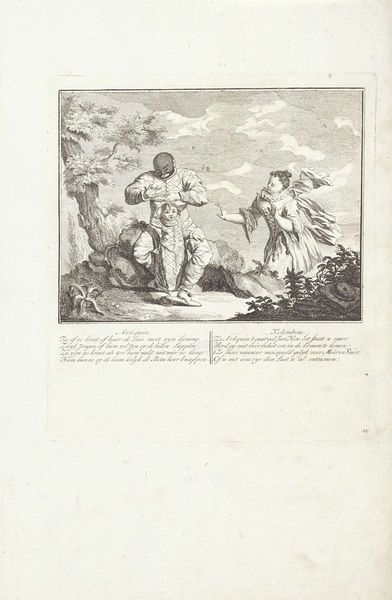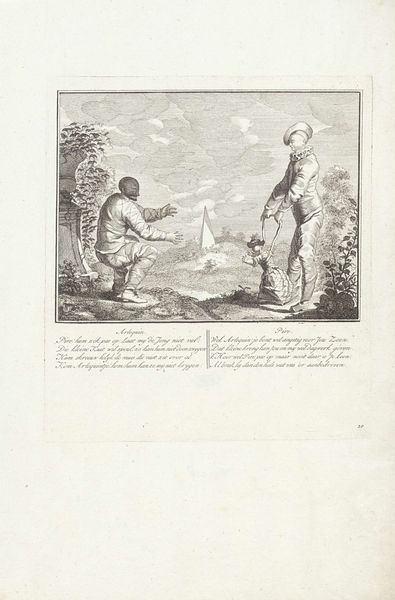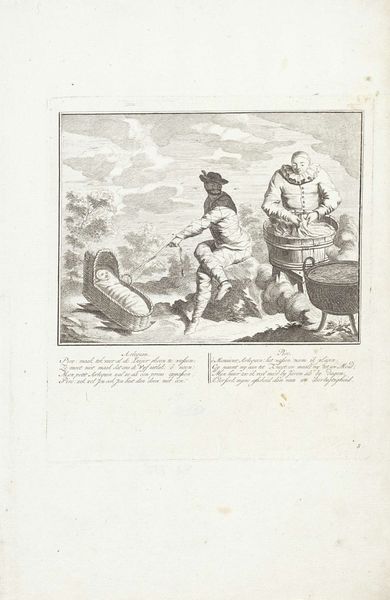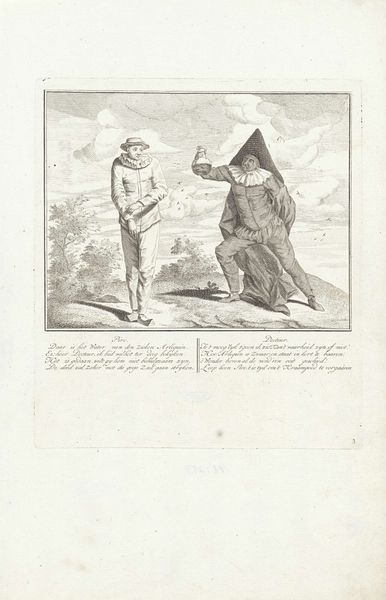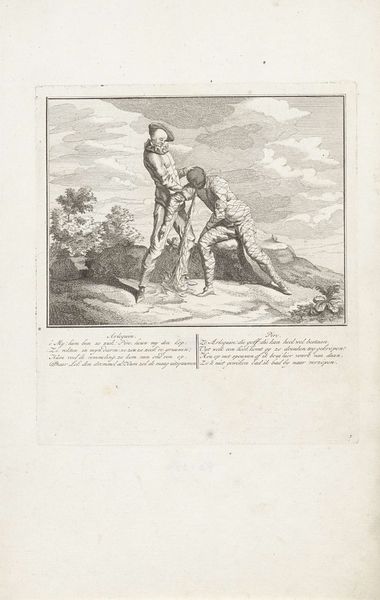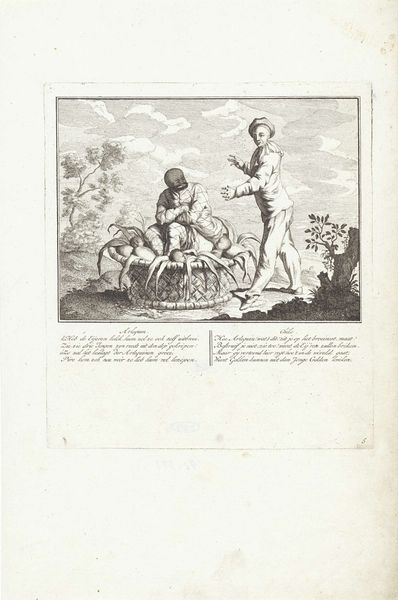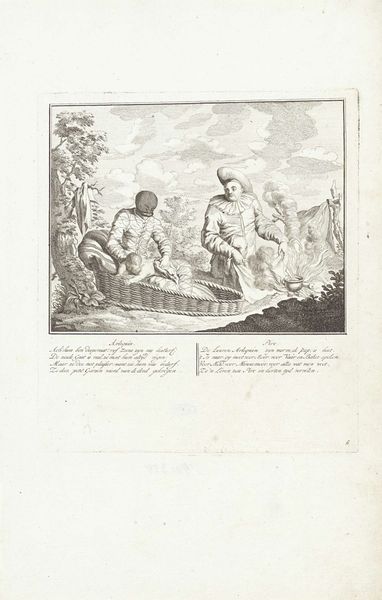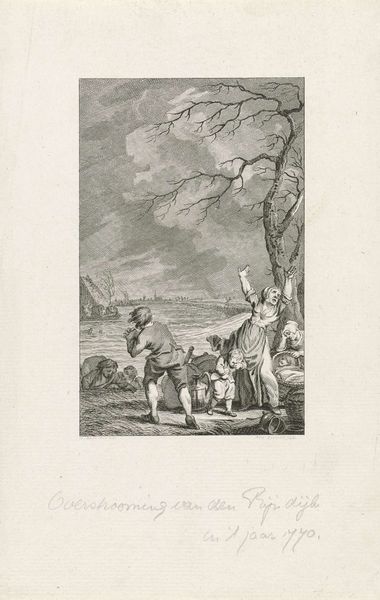
engraving
#
portrait
#
baroque
#
figuration
#
genre-painting
#
engraving
Dimensions: height 238 mm, width 209 mm
Copyright: Rijks Museum: Open Domain
Curator: Welcome. Today, we're observing "Kleine Arlequin in een kinderstoel," or "Little Harlequin in a highchair," an engraving believed to be from around 1720-1728. Editor: My first impression? Stark, certainly not cheerful. It's the contrast of light and shadow, and the thin, etched lines give it an eerie quality. And a sense of confinement--boxed in both literally and figuratively. Curator: Indeed. The figure on the left, the well-dressed observer, gestures towards the child harlequin as though displaying him. Notice that the highchair itself is on wheels, implying that even within supposed safety, there’s still a push towards movement, or perhaps exploitation. The harlequin motif in this period was strongly associated with satire, poking fun at societal norms, love, and ambition through the guise of foolery. Editor: And what of the figure actively engaged with the child? There's such focused engagement—perhaps a puppeteer carefully manipulating the child. Consider how our gaze is directed by the diagonal composition, linking the three figures. The seated figure anchors the visual structure, and leads our eye towards the observing figure, completing a closed circuit. The formal qualities reinforce this impression of inescapable confinement and scrutiny. Curator: A keen reading. This particular iconography touches on broader concerns of the time about childhood, performance, and social roles. Was the harlequin by design meant to fulfill this tragic role as an object of derision for some momentary gain? This image asks the public, then and now, to deeply consider where individual will ends, and cultural force begins. Editor: Thinking about its technique, one has to appreciate the fine lines of the engraving, the masterful rendering of light with sparse material. And while the overall mood is grim, its impact derives entirely from the intrinsic relationship between figure and ground and its geometric precision. Curator: A piece such as this offers layers of historical meaning—a glimpse into theatrical culture, representations of youth, and critiques of social mores of its period. Editor: Precisely. And considered formally, a haunting reminder of art's ability to affect.
Comments
No comments
Be the first to comment and join the conversation on the ultimate creative platform.
